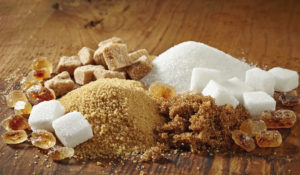Salt is an important ingredient for a variety of recipes, whether you’re seasoning chicken or baking cupcakes. Sea salt and table salt are both popular choices, but which one should you choose? Both types have different components that separate their flavor profile. Discover the differences between sea salt and table salt to learn more about which salt best fits your cooking or baking needs.
What is Sea Salt?
Sea salt is produced by the evaporation of saltwater by the sun, wind, and time. It carries trace minerals such as calcium, magnesium, and iron, and is usually available in fine grains and crystals. Due to the trace minerals, sea salt is known for having more of a complex, full-bodied flavor. The crystals are usually bigger, and are available in forms of flakes that are popular for finishing purposes. Sea salt is commonly used to enhance recipes with its bold flavor profile and more defined crystal size. At Bremer, our bulk sea salts are purified, and are most commonly used for items like salad dressings, margarine, canned vegetables, and pickled vegetables.
What is Table Salt?
Table salt is produced by mining from underground deposits. Table salt is processed to remove minerals and impurities, and is typically fortified with iodine to prevent clumping and create a fine texture. Table salt has a sharper taste due to the elimination of minerals and impurities, and is commonly used in small quantities for baking. Too much table salt can cause a metallic taste, so it’s important to use this ingredient in moderation. For a fine-textured salt, explore Bremer’s salts, which include iodized salt options.
What’s the Difference between Sea Salt and Table Salt?
The main differences between sea salt and table salt are the taste, texture, process, and shelf life. Sea salt brings a richer, complex flavor, and is used in flake form for topping off baked goods and recipes. Table salt is best used in small doses, ringing true to its name. Sea salt has a crunchier, flakier texture, while table salt is fine and made to dissolve. Sea salt lasts longer and has a longer shelf life compared to table salt, due to the added iodine and preservatives. Table salt can last up to five years before its minerals break down over time.
Fulfill All Your Sea Salt & Table Salt Needs At Bremer
No matter what type of salt you’re looking for, Bremer supplies a variety of types for your bulk ingredient needs. From bulk sea salt and iodized salt to flour salt and reduced salt alternatives, Bremer makes sure to deliver quality items at competitive prices.

